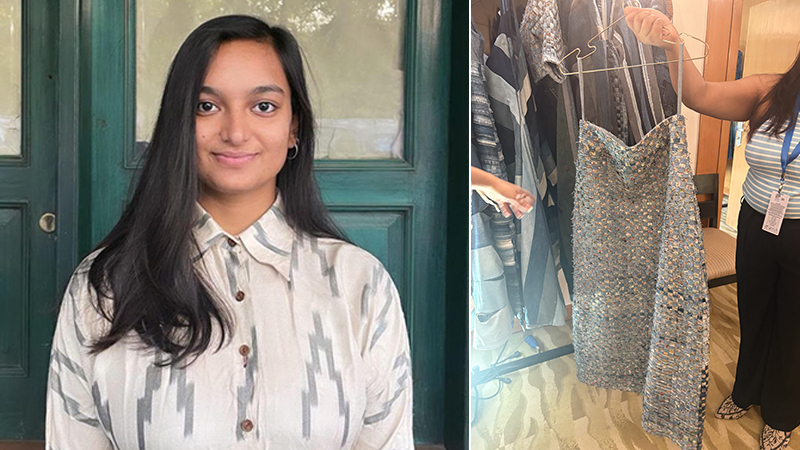She grew up in Lucknow away from the city lights as the daughter of a homemaker-mom from Agra, and a professor father. But art and craft were her two loves, even though she ranked 20th all-India, and studied fashion design at NIFT Delhi (2015-2019 batch). Anam Husain, is not new to ‘winning’.
She won the Woolmark Runway award and Raymond Design Challenge; we are not surprised why! Talented and quiet, she likes to break set moulds – block printing with achada waste (cloth used to dye the fabric) that she converted into beautiful elements on her shirts. Banana waste is woven into yarn, then marble printed. Three years ago when she began her brand, she knew this was her path.

There are many conscious companies like Technoserve (support sustainable local economic development, promote gender-inclusive growth, poverty elimination), as well as Ikea and Visa who have supported sustainable practices. Denim that has been lying in landfills was collected with the help of Saahas Waste Management (processes post-consumer and pre-consumer textile waste, sorts based on its fiber, and directs to circular solutions) and Greenworms (Jabir Karat, who won Gandhi Fellowship, worked as a ragpicker to gain knowledge, and works with waste management).
Almost 1000 kg denim has been recycled, and crafted into Husain’s collection – panelled skirts, jackets, vests et al. “They helped us cut and wash, belts, pockets, zippers which we use as ‘embellishments’. Trims as tassels, we added crochet (hand-done by artisans of Khemka Charitable Trust) and chhatai work as detailing. Most of the pieces are reversible, for versatility, the idea is to channel circularity,” she adds.
What’s even more interesting is how she used the Material Library of India (MLI recycles industrial and agricultural waste) and upcycled yarn made from discarded copper wires, which was then woven into cotton. “The upcycling community is coming together. This is a huge movement. Gen Z wants to wear crafts, pieces must be thoughtful, not trendy,” she explains. It takes a week to weave and stitch one shirt, even the block prints are one-of-a-kind. “Middle class girls find it tough,” she laughs, “I’m entirely bootstrapped, but fashion needs young engaging voices to stitch a new landscape,” she adds. – Asmita is the Lifestyle Editor of NRI Focus. She is an award winning journalist who has been writing on fashion for the last 32 years


Leave a Reply